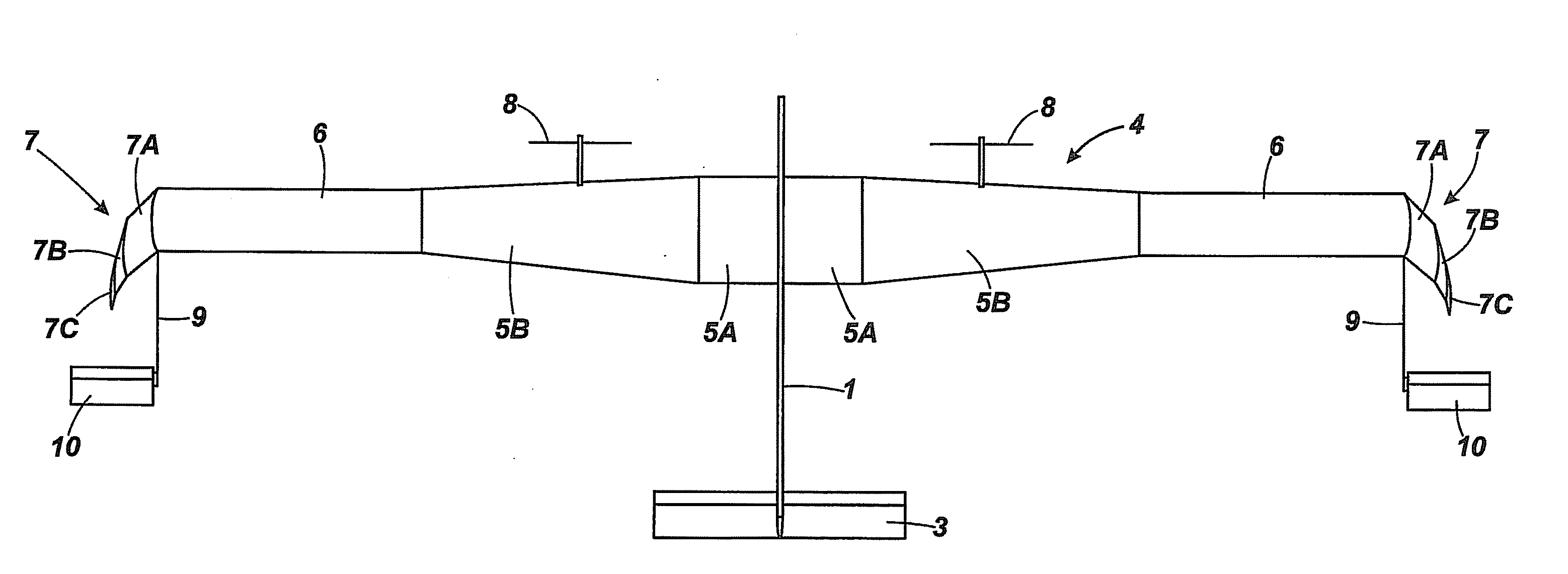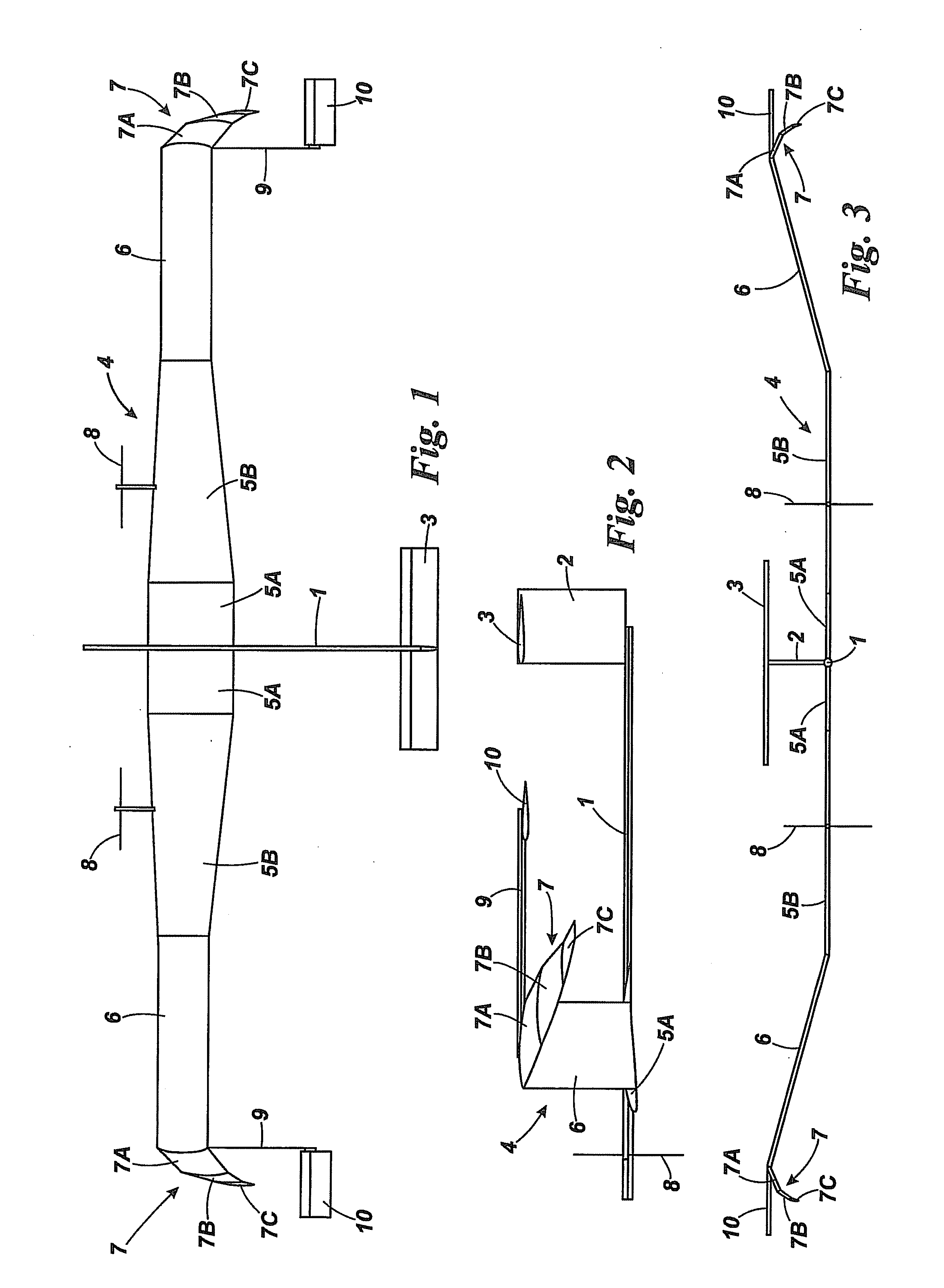Aircraft
- Summary
- Abstract
- Description
- Claims
- Application Information
AI Technical Summary
Benefits of technology
Problems solved by technology
Method used
Image
Examples
Embodiment Construction
[0011]The aircraft of FIGS. 1 to 3 is a high altitude, long endurance, solar powered UAV. It comprises a tubular fuselage 1 with a tail fin 2 carrying a tailplane 3, and a mainplane 4. Each wing of the mainplane has an inboard portion 5A, 5B, outboard portion 6 and tip 7, as will be described more fully hereinafter. Substantially the whole of the upper surface of each wing portion 5A, 5B and 6 is covered with arrays of photovoltaic cells (not separately shown), or such cells may be housed within the mainplane structure beneath a transparent upper skin. Its powerplant comprises a pair of wing-mounted brushless DC electric motors (not seen) each driving a respective propeller 8, although other embodiments may comprise a different number of such powerplant depending on the size of airframe and motor rating. Housed within the mainplane structure are a plurality of rechargeable lithium ion batteries or regenerative fuel cells.
[0012]In use the UAV will be flown to a desired stratospheric ...
PUM
 Login to View More
Login to View More Abstract
Description
Claims
Application Information
 Login to View More
Login to View More - R&D
- Intellectual Property
- Life Sciences
- Materials
- Tech Scout
- Unparalleled Data Quality
- Higher Quality Content
- 60% Fewer Hallucinations
Browse by: Latest US Patents, China's latest patents, Technical Efficacy Thesaurus, Application Domain, Technology Topic, Popular Technical Reports.
© 2025 PatSnap. All rights reserved.Legal|Privacy policy|Modern Slavery Act Transparency Statement|Sitemap|About US| Contact US: help@patsnap.com


